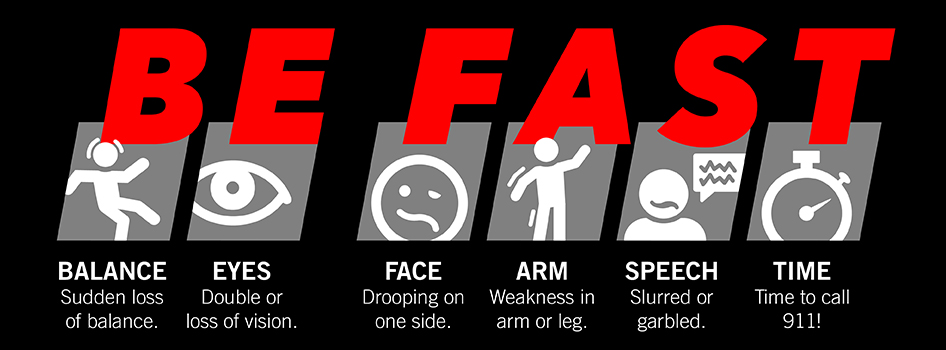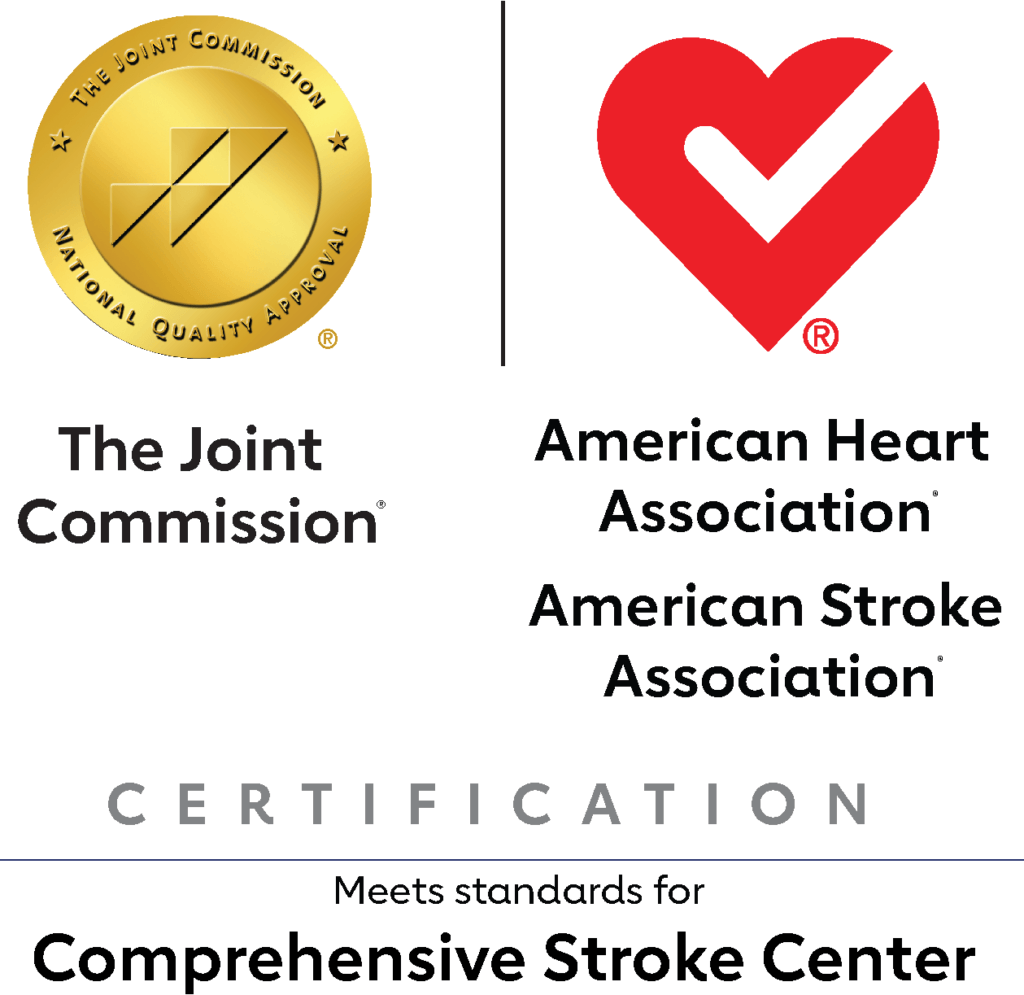
Ischemic Stroke
Ischemic Stroke Overview
Ischemic stroke occurs when blockage of an artery causes an inadequate supply of blood and oxygen to the brain. Ischemic stroke is the most common form of stroke, accounting for 87 percent of all strokes.
The brain depends on fresh blood to carry oxygen and nutrients to the brain and to dispose of waste products. If an artery becomes blocked, brain cells in the region supplied by that artery stop working. If the artery remains blocked for more than a few minutes, brain cells begin to die. This is why the immediate medical treatment of stroke is critical.
An ischemic stroke can be classified as follows:
- Embolic stroke – a blood clot or plaque fragment forms somewhere in the body and becomes lodged in a blood vessel in the brain that is too small for it to pass through
- Thrombotic stroke – a blood clot forms inside one of the arteries that supplies blood to the brain or inside an artery within the brain itself
The most common risk factor for ischemic stroke is high blood pressure. If you have high blood pressure, it is important to work with your doctor to manage it.
Other common risk factors can be modifiable (things you can change) and unmodifiable (things you cannot change) and include:
Unmodifiable Risk Factors for Stroke
- Age over 50
- Family history of ischemic stroke
- Previous history of stroke
Modifiable Risk Factors for Stroke
- Consuming more than 1 alcoholic drink per day for women, or more than 2 per day for men
- Diabetes
- High cholesterol
- Smoking and tobacco use
- Unhealthy diet, obesity, and inactivity
- Use of birth control pills or hormone therapies that include estrogen
Recognizing a stroke quickly and calling 9-1-1 leads to faster diagnosis and treatment and better recovery. People should “BE FAST” when it comes to stroke.
Here’s how to BE FAST:
- B – BALANCE: Ask the person to walk. Do they have trouble keeping their balance or walking normally?
- E – EYES: Ask the person about their eyesight. Have they lost vision or experienced vision changes in one or both eyes?
- F – FACE: Ask the person to smile. Does one side of the face droop?
- A – ARMS: Ask the person to raise both arms. Does one arm drift downward?
- S – SPEECH: Ask the person to repeat a simple phrase. Is their speech slurred or strange?
- T – TIME: If you observe any of these signs, call 9-1-1 immediately.


Ischemic Stroke Symptoms
The signs of a stroke depend on the side of the brain that is affected, the part of the brain affected, and how severely the brain is injured. Therefore, each person may have different stroke warning signs.
The most common symptom of ischemic stroke is sudden weakness of the face, arm, or leg, usually on one side of the body.
Symptoms of ischemic stroke may also include:
- Blindness in one or both eyes
- Difficulty speaking (for example, slurred speech)
- Dizziness and vertigo
- Double vision
- Generalized weakness on both sides of the body
- Impaired consciousness (such as confusion)
- Loss of coordination
- Seizure
- Sudden changes such as sudden confusion, difficulty speaking, difficulty understanding speech, or difficulty seeing in one or both eyes
- Sudden numbness of the face, arm, or leg, especially on one side of the body
- Urinary incontinence
Stroke is a medical emergency. If you or someone you know has these symptoms, call 9-1-1 immediately.
Ischemic Stroke Treatments
The longer a stroke goes untreated, the more brain cells die and the more difficult recovery becomes. Therefore, it is critical to treat stroke quickly to preserve as much brain tissue as possible.
One of the treatment choices for ischemic stroke is a drug called tissue plasminogen activator, or tPA. Tissue plasminogen activator (tPA) breaks up the blockages in the arteries that cause ischemic stroke, restoring crucial blood flow to the brain.
However, limitations on the use of tPA make quick and accurate diagnosis critical for stroke patients. This is because tPA can actually worsen the prognosis for a person with hemorrhagic stroke, and tPA no longer improves outcomes if it is not administered within the first 4.5 hours of symptoms appearing.
If the blockage occurs in a large brain artery, endovascular thrombectomy can be an effective treatment. In this procedure, a surgeon mechanically removes the blood clot by breaking it up and removing the pieces through a catheter or retrieving the clot with a stent device.
Neuro-Rehabilitation after Ischemic Stroke
Many people who have had an ischemic stroke will need neuro-rehabilitation to help them regain function lost as a result of their stroke.
Neuro-rehabilitation helps stroke survivors regain brain functions and become as independent as possible. Rehabilitation does not reverse brain damage, however, it can help people achieve the best possible long-term outcome.
Rehabilitation treatments will vary for each person depending on the location in the brain and the severity of their stroke. It can be provided in an acute care hospital, a rehabilitation hospital, or an outpatient setting.
Rehabilitation can last from one month to more than two years and involves numerous physicians, nurses, and therapists. Learn more about the Stroke Neuro-Rehabilitation Program at Barrow.
Additional Information on Ischemic Stroke
Is ischemic stroke preventable?
Ischemic stroke is preventable. Around 80% of strokes could be prevented by lifestyle and behavior modification and control of healthcare conditions like diabetes, obesity, and high cholesterol. If you have any of the following risk factors, speak to your doctor about it. They will work with you to help get them under control and reduce your risk of stroke.
- Smoking
- High blood pressure: systolic blood pressure greater than 140 mm/Hg; diastolic blood pressure greater than 85 mm/HG
- Diabetes: hemoglobin A1c, an index on how blood sugar is controlled, should be less than 5.7%
- Hypercholesterolemia: your “bad cholesterol”, LDL, should be around 70 mg/dL
- Physical inactivity and obesity
- Excessive alcohol consumption
How common is ischemic stroke?
Nearly 800,000 people suffer a stroke each year. Eighty-seven percent of these strokes are ischemic strokes.
Who gets ischemic stroke?
Ischemic strokes can occur at any age, but they are more common in adults over the age of 60. About 55,000 more women than men have an ischemic stroke, and it is more common among African-Americans than members of other ethnic groups.
How is a stroke diagnosed?
If a stroke is suspected, brain imaging should be performed immediately upon arrival to the hospital. Computed tomography (CT) is usually performed first to distinguish an ischemic stroke from a hemorrhagic stroke, a brain tumor, an abscess, and other structural abnormalities. Magnetic resonance imaging (MRI), which can detect ischemic strokes within minutes of their start, or cerebrovascular testing, may also be used.






